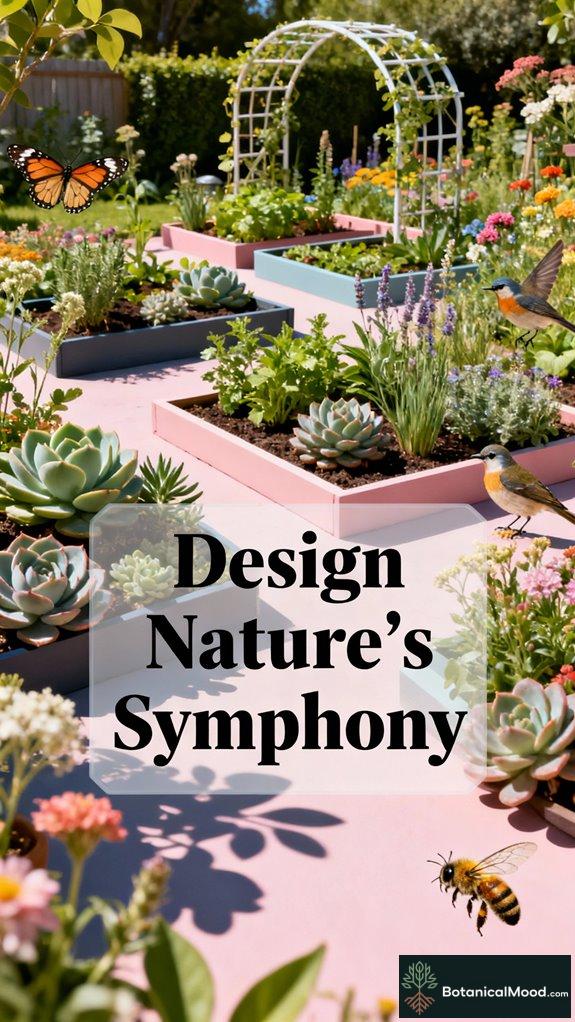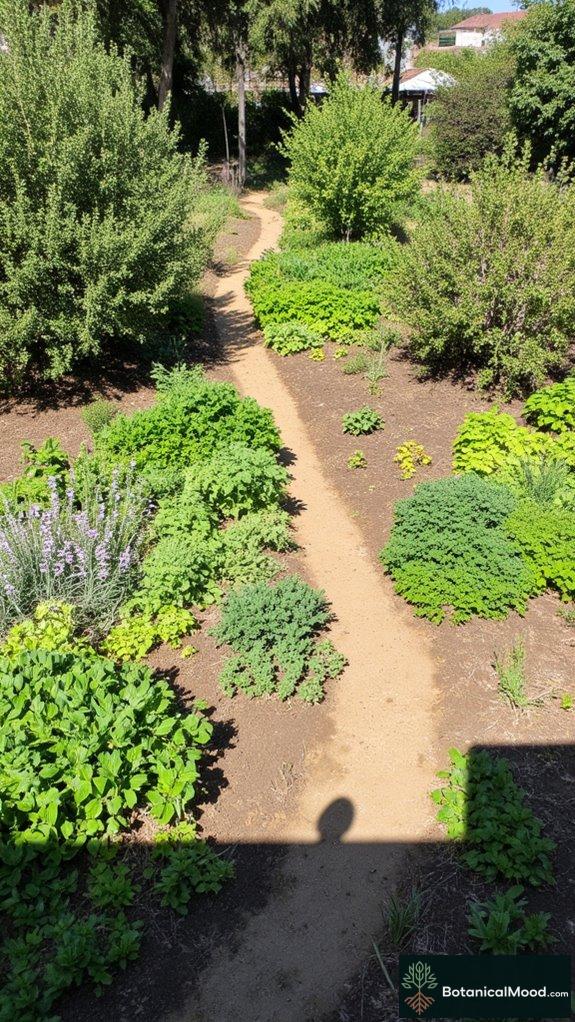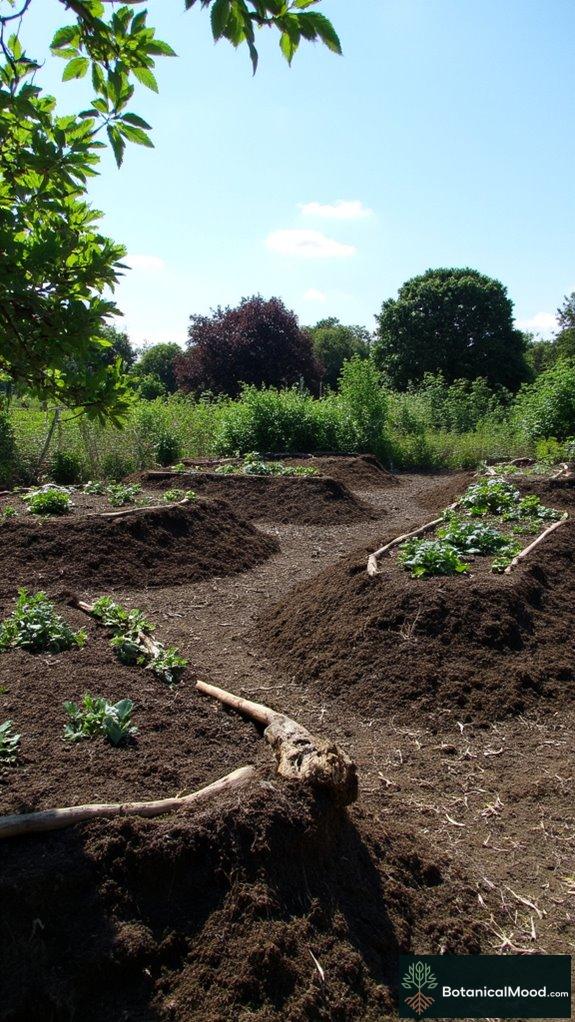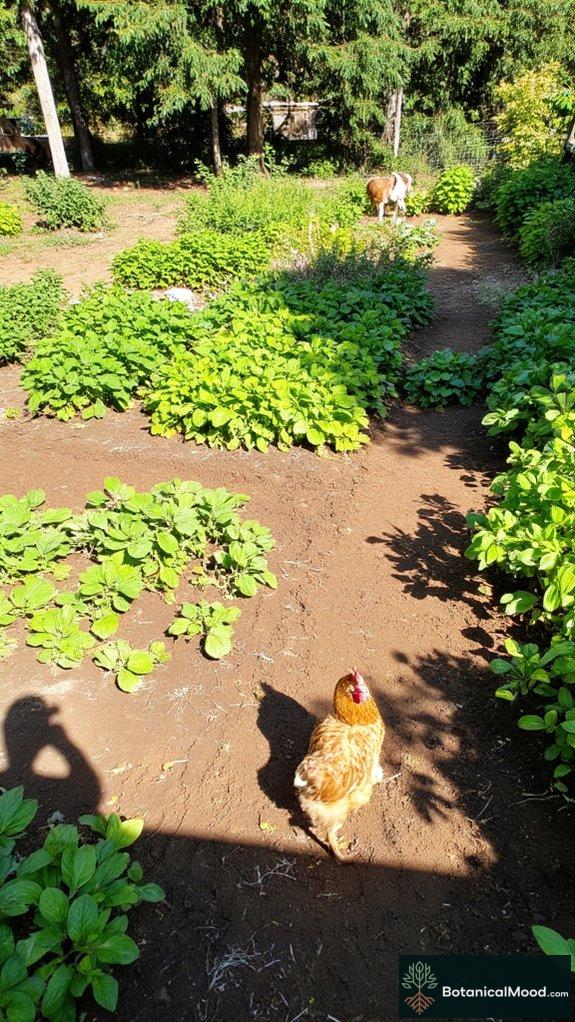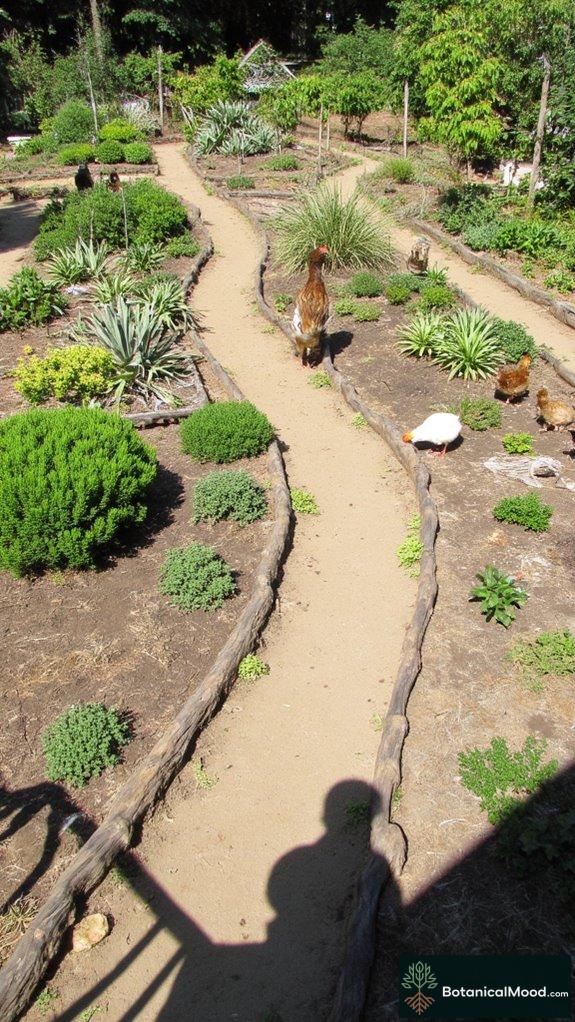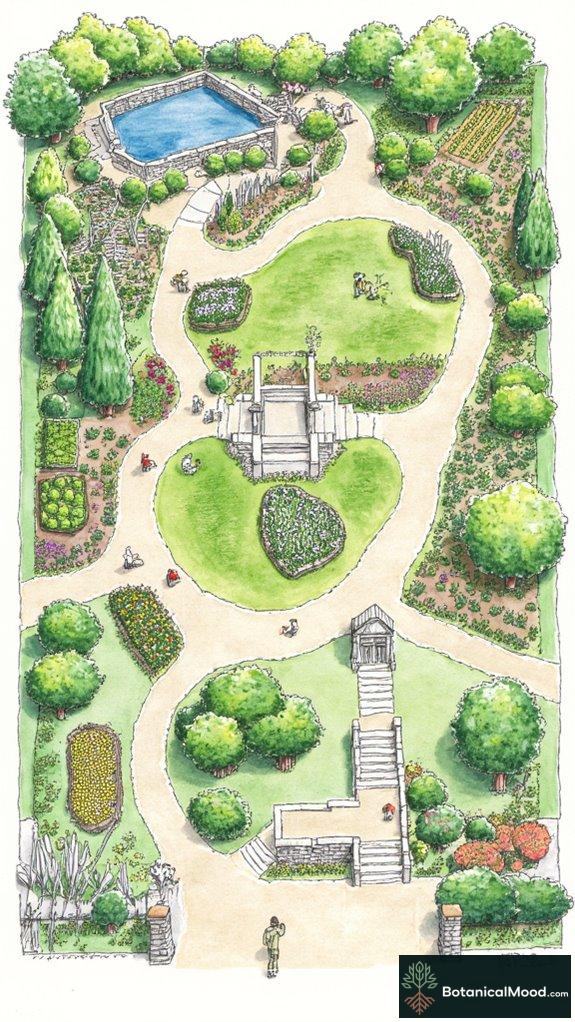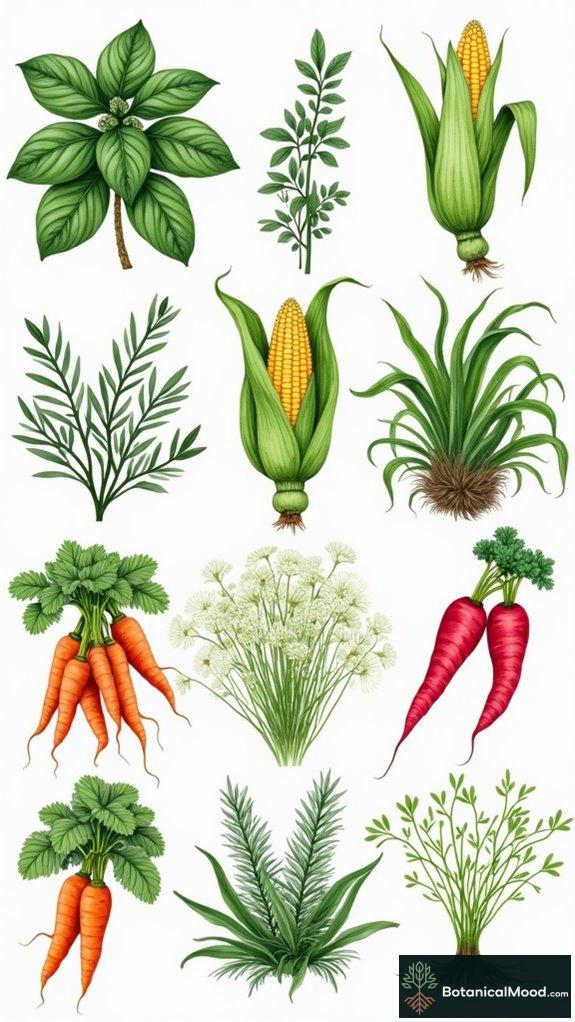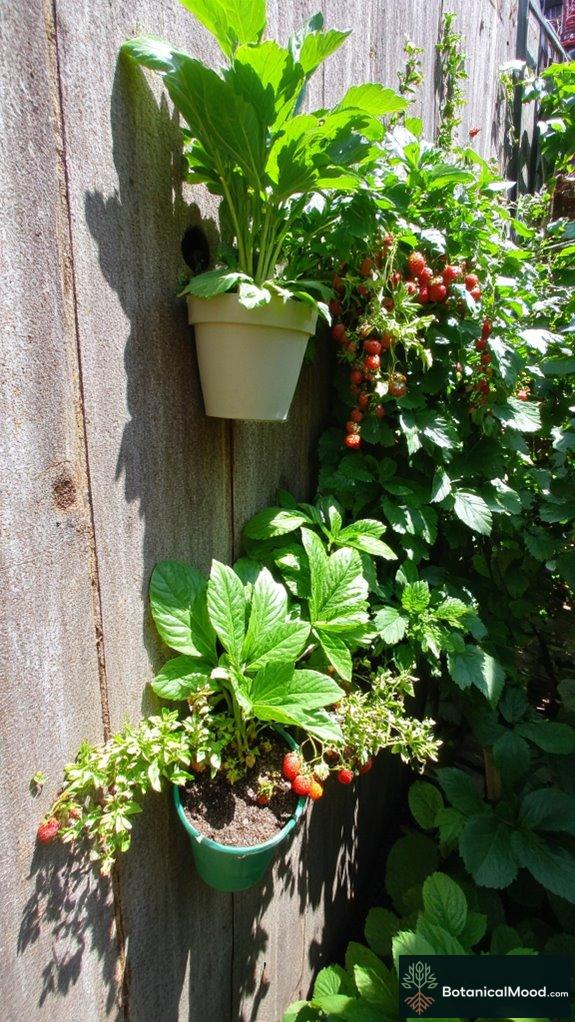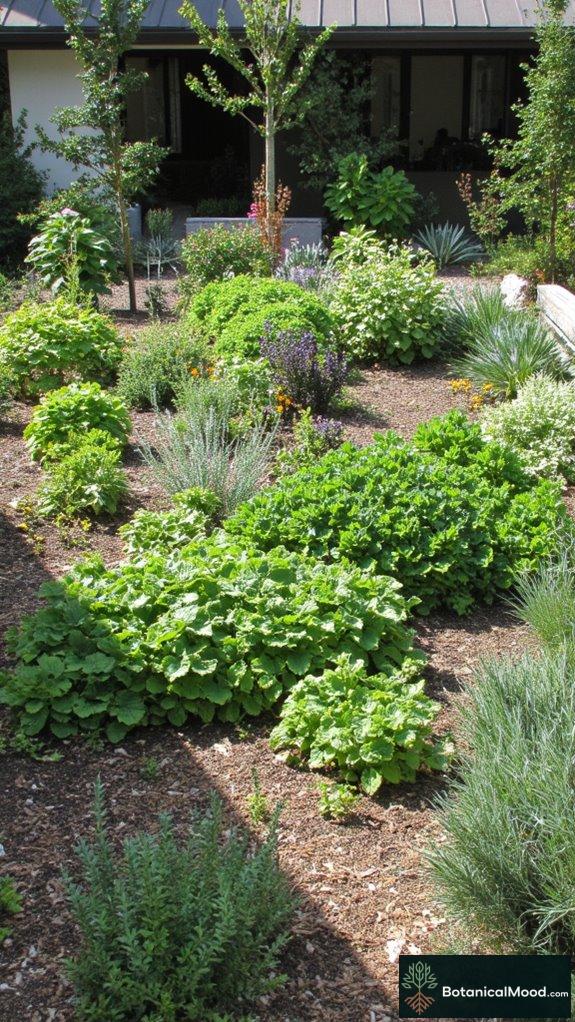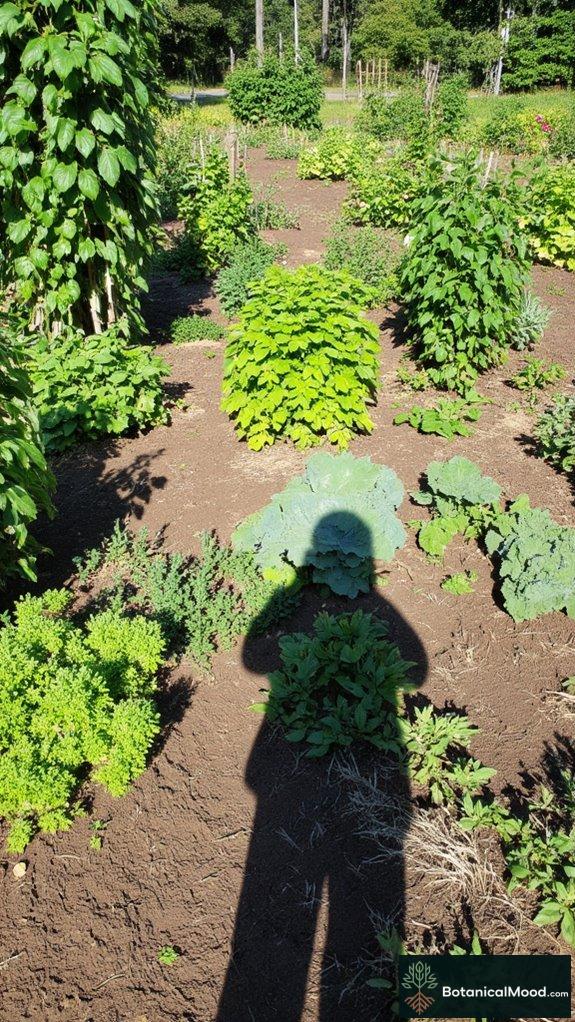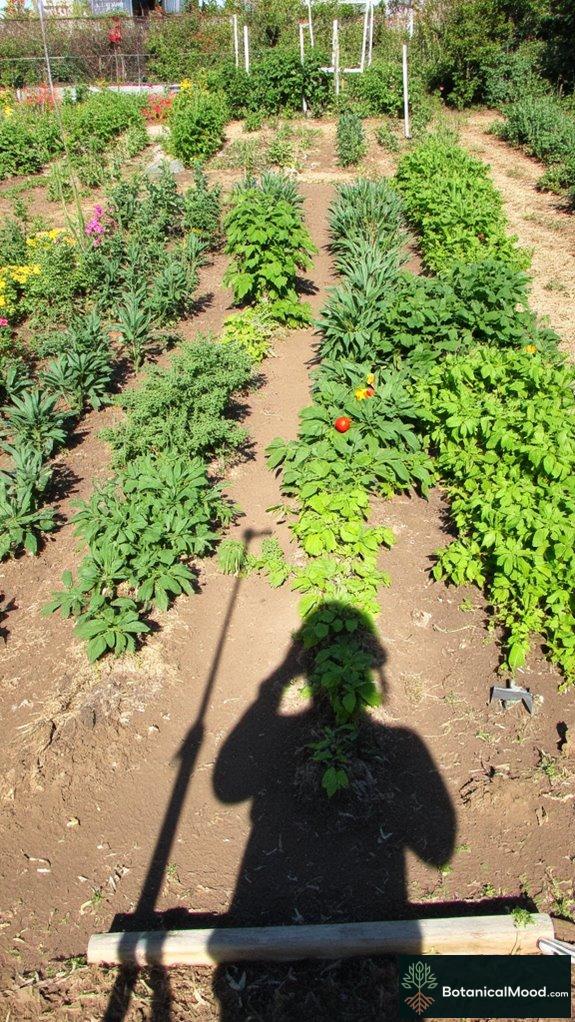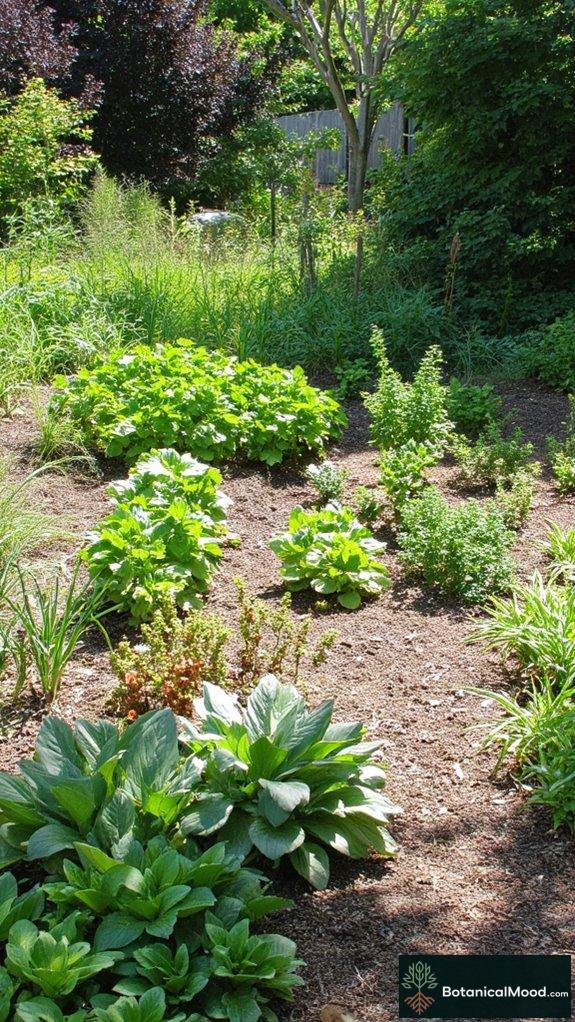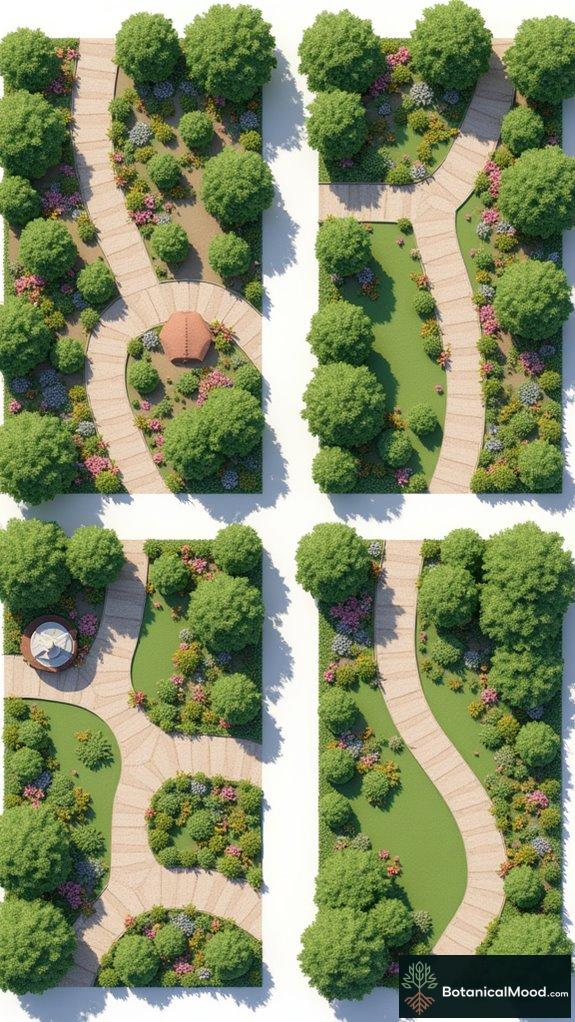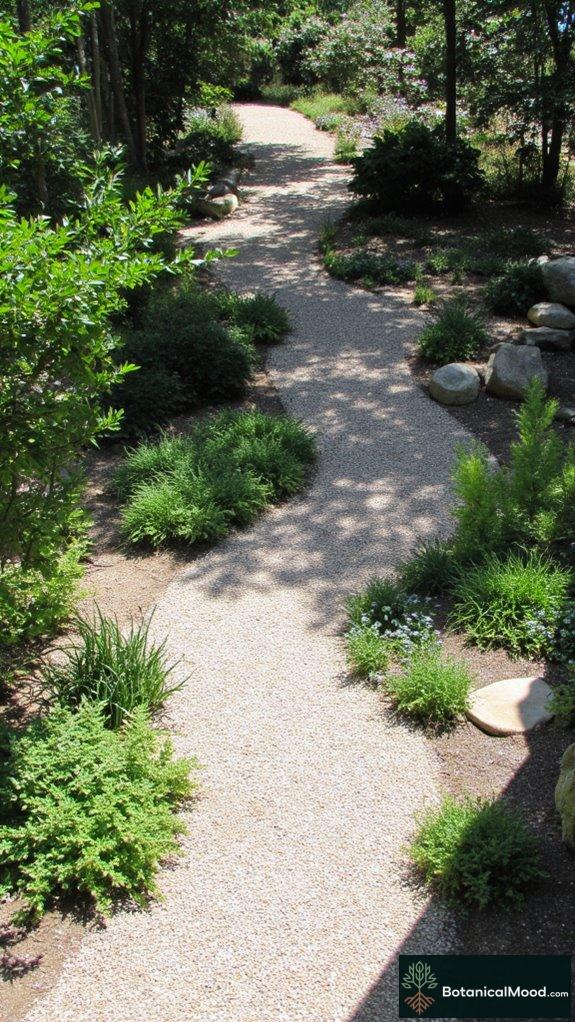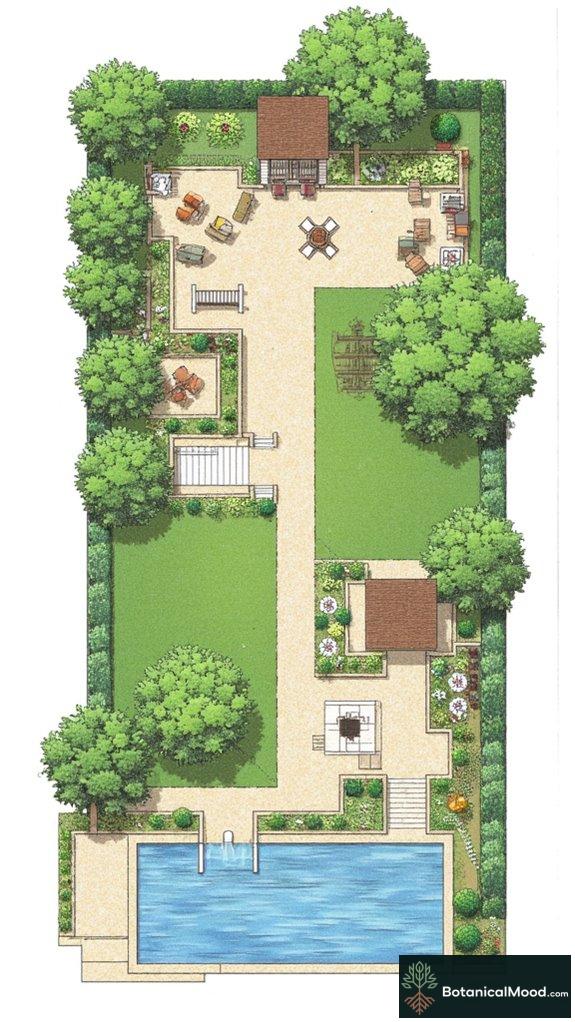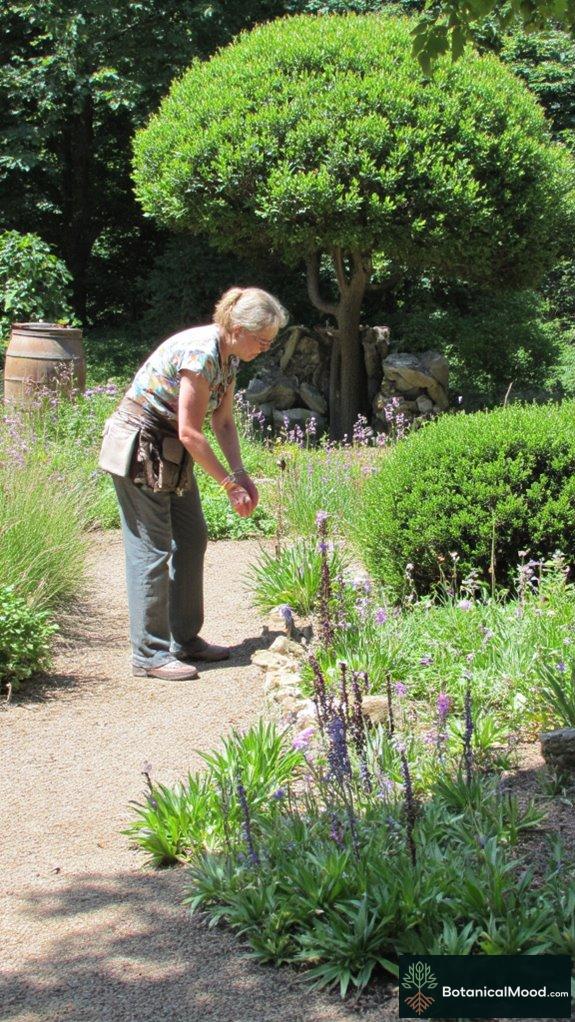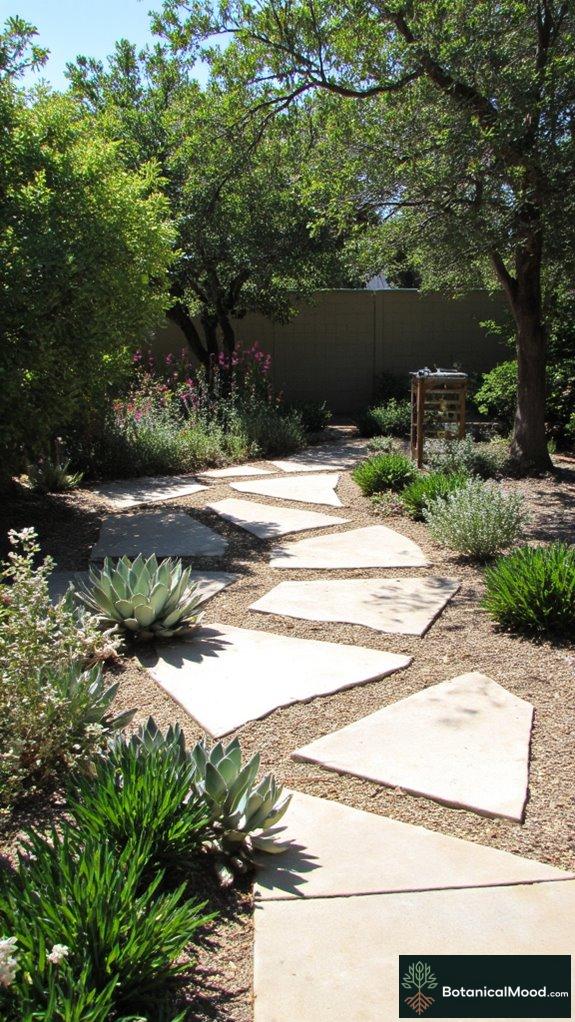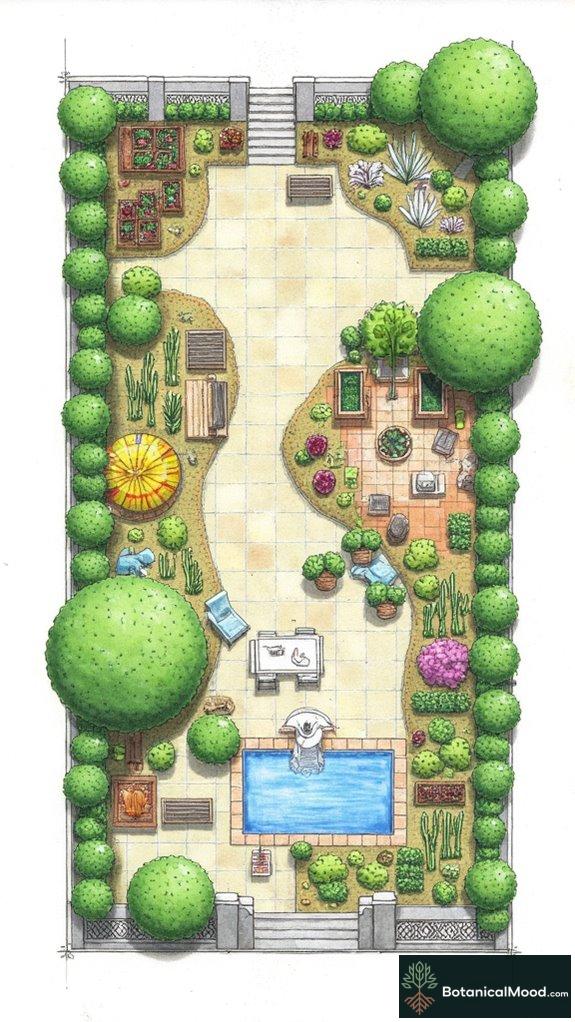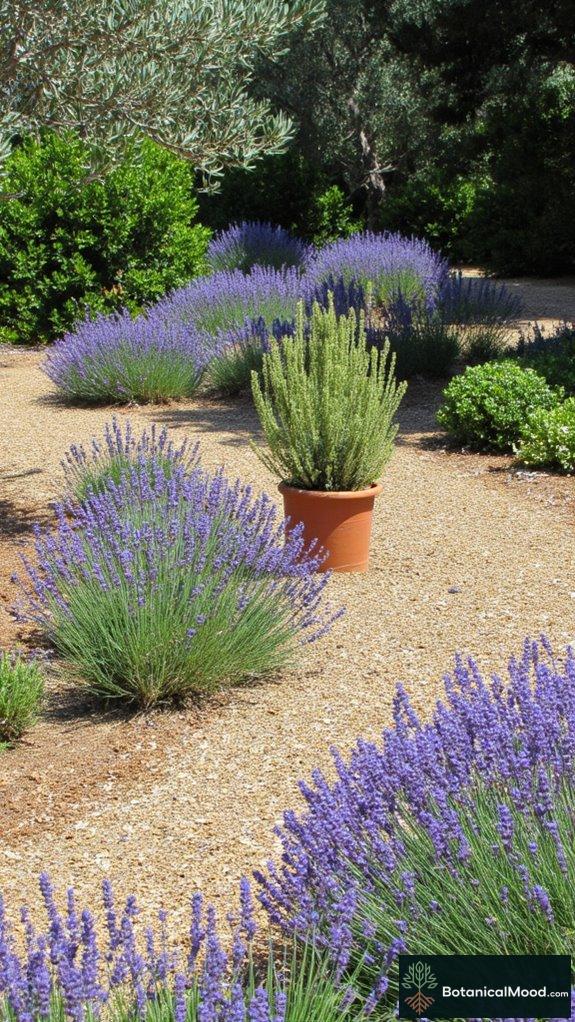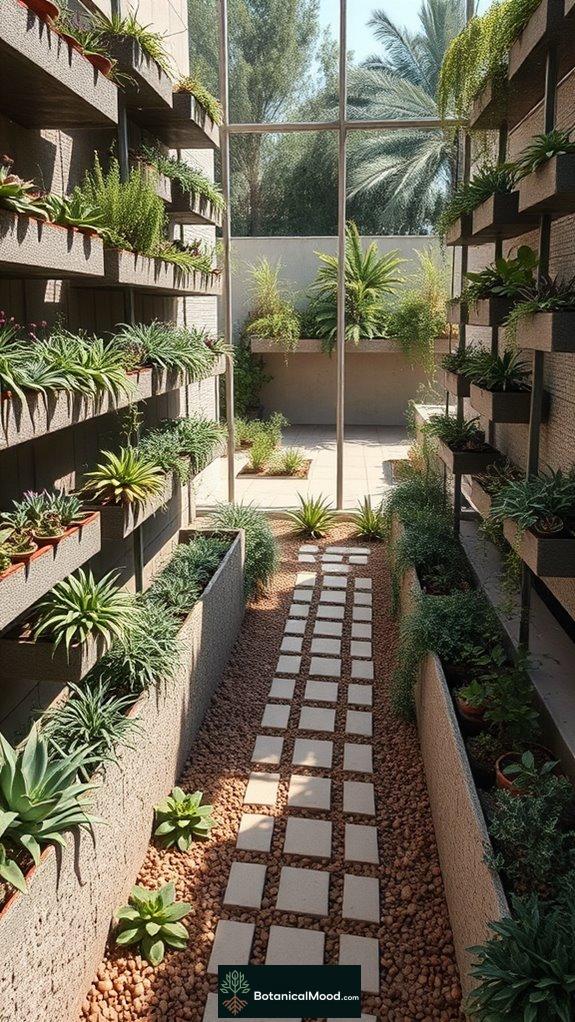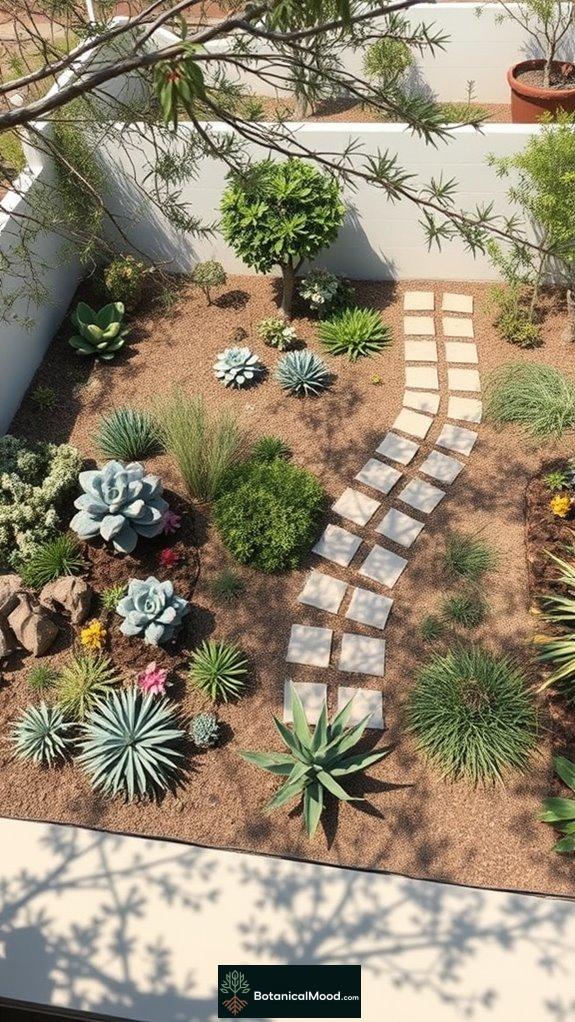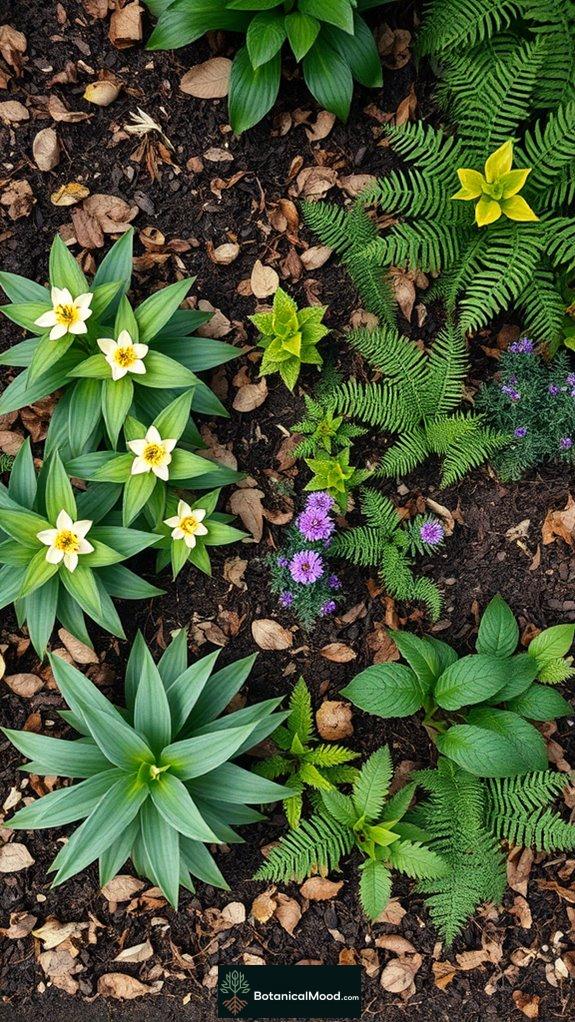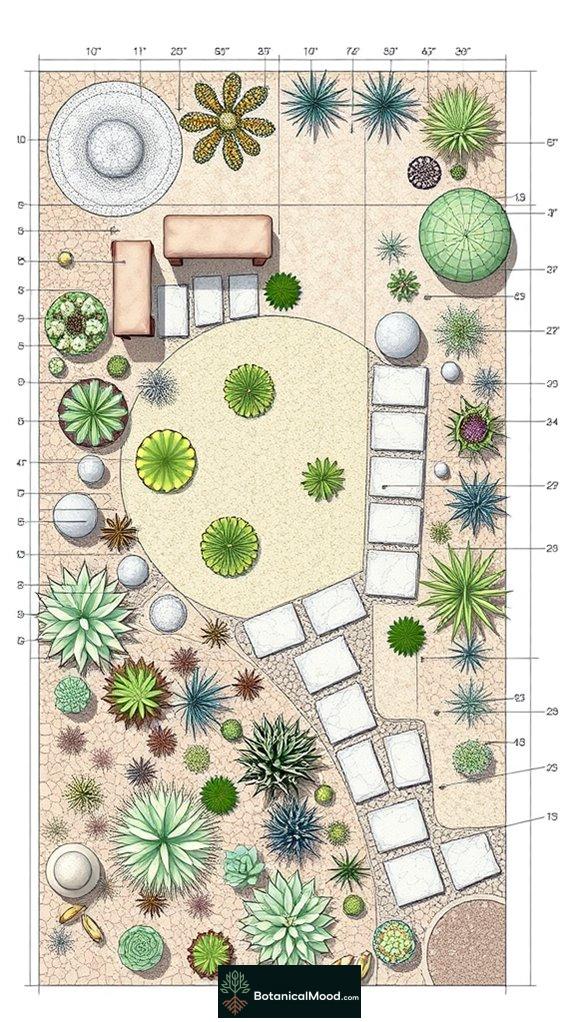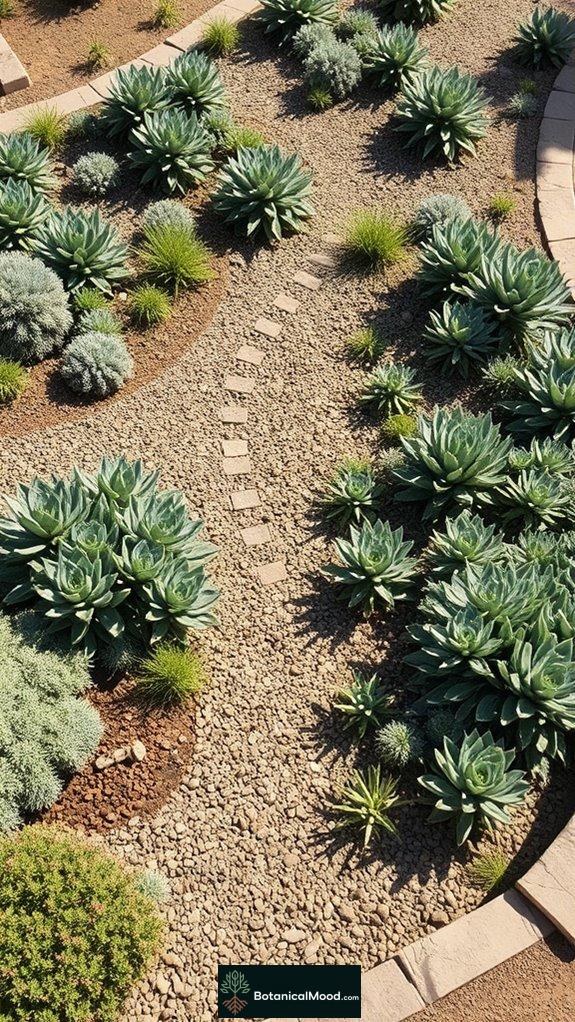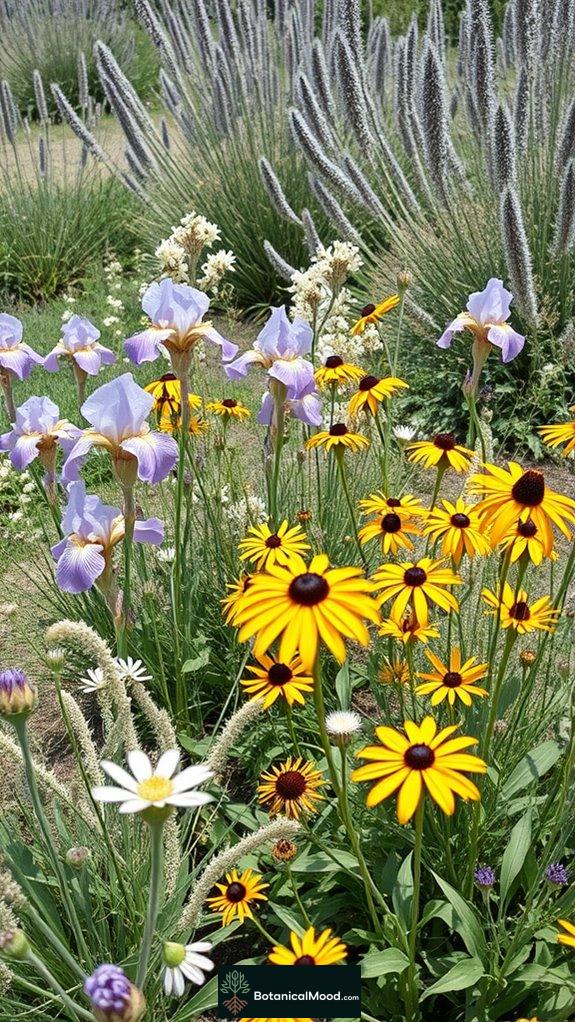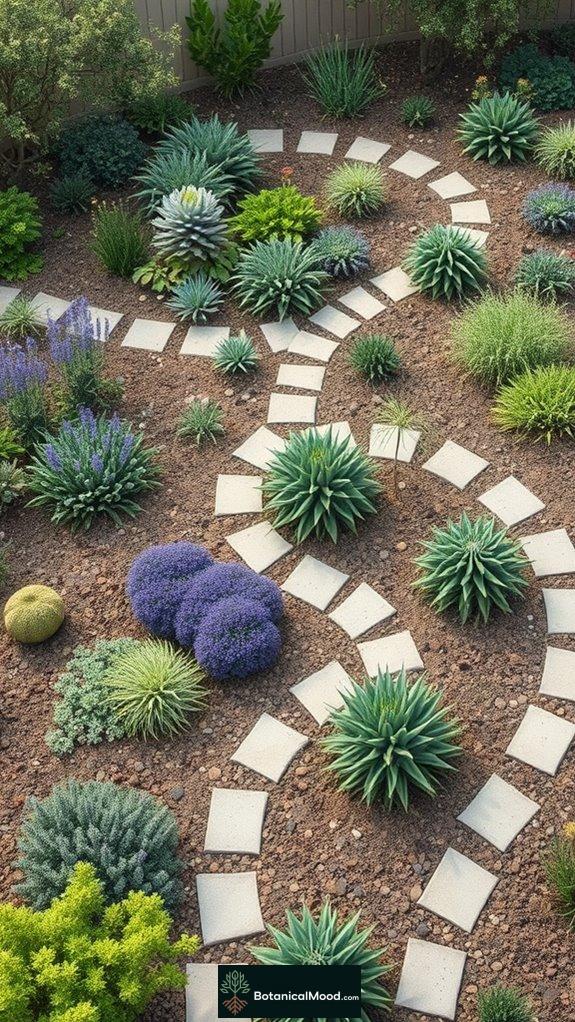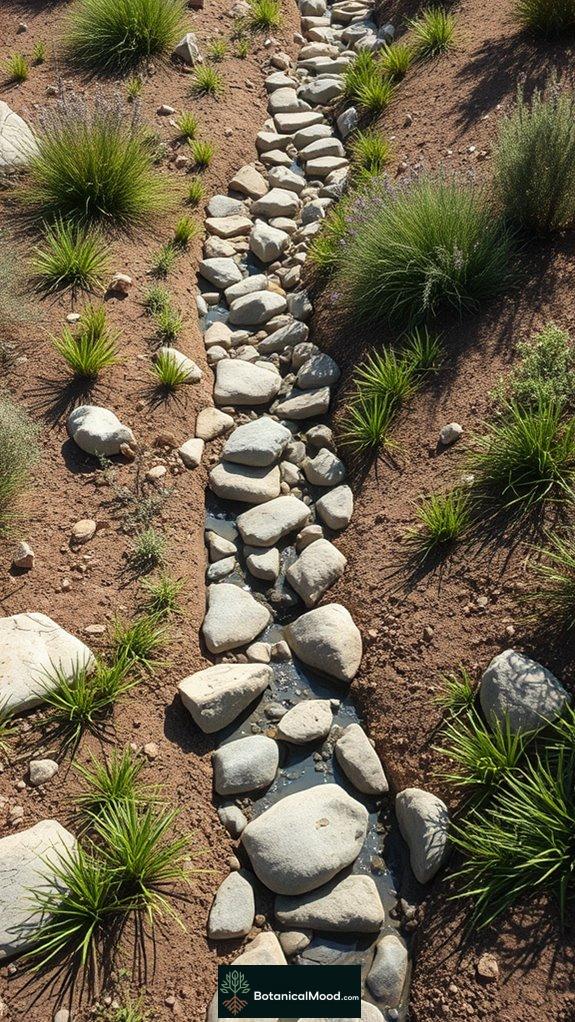Ever thought a city garden could be both colorful and functional?
Well, let me tell you, it can! I’ve dabbled in vertical gardening with wall-mounted planters and trellises. Trust me, nothing says “I’m a plant parent” quite like having climbing *Thunbergia alata* adding pops of color and height to my space.
And yes, I’ve tried self-watering planters to avoid the dreaded over- or under-watering. Hydroponic setups? Sure, why not? They make me feel like I have my life together.
But hey, who knew blending natural materials into my little oasis would turn it into a biophilic haven? Is it too cliché to say it changed my life?
Ready to dig deeper?
The Perfect Container: Embracing Edible Garden Design
A couple of summers ago, I decided to ditch the balcony floor and embrace elevated container gardening. As I wrestled with heavy pots of herbs, I felt a weird sense of empowerment. Who knew basil could be so heavy?
I strategically mixed herbs with flowers for a beautiful fusion. Suddenly, my space became a mini farmers market right outside my door. Non-GMO tomatoes, fresh mint, and edible nasturtiums—talk about feeling gourmet!
There’s something about bringing those homegrown flavors into my cooking that makes me feel fancy. Urban gardening might seem challenging, but it’s truly worth it—especially for foodies. And let’s be real, can anything beat an heirloom tomato right off the vine? I think not!
Quick Takeaways
- Utilize vertical gardening techniques, such as wall-mounted planters and climbing plants, to maximize limited space and add visual interest in urban environments.
- Implement smart planters with self-watering features to minimize maintenance while ensuring optimal hydration for your plants.
- Explore hydroponic and aeroponic systems for soil-less gardening options that thrive in confined spaces, allowing for diverse plant growth.
- Create sensory gardens with varied plant textures and colors to engage both children and adults, enhancing the urban gardening experience.
- Use ergonomic tools for comfort during gardening tasks, and assess sunlight exposure for strategic plant placement to optimize growth.
Embrace Vertical Gardening Techniques

When it comes to maximizing your small garden space, embracing vertical gardening techniques can truly transform your outdoor oasis into a lush, green retreat.
I’ve found that utilizing wall-mounted planters, trellises, or even creating a vertical herb garden with charming containers can create stunning visual layers.
Consider integrating climbing plants like *Thunbergia alata* (black-eyed Susan vine) or *Phaseolus coccineus* (runner bean) to add color and height, while also maximizing sun exposure.
Moreover, incorporating vertical elements lets me play with textures and shades, making each space uniquely vibrant.
Trust me, innovation in vertical gardening redefines small-space possibilities while evoking a serene atmosphere I cherish in my own abode. Additionally, using creative vertical garden designs can inspire new ways to utilize your limited space effectively.
Implement Smart Planters for Efficient Resource Use

After exploring the wonders of vertical gardening, the next step in transforming a small garden is implementing smart planters that enhance resource efficiency.
I love using self-watering planters, like those from Lechuza, which not only reduce watering frequency but also help optimize moisture levels for plants such as Salvia officinalis.
Self-watering planters, like those from Lechuza, beautifully balance convenience and plant health by ensuring optimal moisture.
Furthermore, I’ve found that incorporating glazed ceramic pots increases thermal regulation, protecting roots from temperature extremes.
Using lightweight, durable materials, my favorite are eco-friendly composites, creates easy mobility for rearranging layouts.
Embracing these innovative designs illuminates both the beauty of our urban gardens and the seamless integration of sustainability into daily life. Additionally, creating a DIY vertical herb garden can maximize space while providing fresh ingredients right at your fingertips.
Utilize Hydroponic and Aeroponic Systems
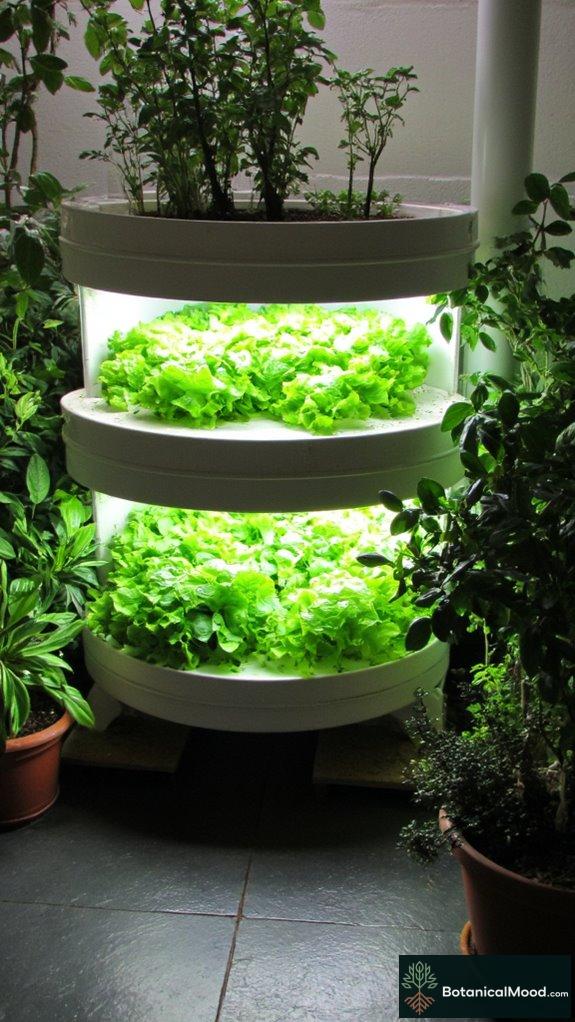
Hydroponic and aeroponic systems are revolutionizing the way we approach small-space gardening, allowing us to grow a diverse array of plants without the constraints of traditional soil-based methods.
These innovative techniques, such as nutrient film technique and vertical gardening, harness water and nutrient solutions to nourish plants like basil (Ocimum basilicum) and lettuce (Lactuca sativa) directly to their roots.
Brands like AeroGarden and Greenhouse Megastore offer user-friendly solutions, perfect for urban dwellers.
As I explore these technologies on Botanical Mood, I’m continually amazed by how they create lush, vibrant gardens in the smallest of spaces, enhancing both beauty and functionality.
Design Biophilic Spaces for Enhanced Wellbeing

Integrating greenery into our living spaces can greatly enhance wellbeing, offering a rejuvenating respite from the urban environment.
Incorporating greenery into our homes provides a vital escape from urban life, promoting wellbeing and rejuvenation.
Incorporating elements like vertical gardens, green walls (e.g., those from LiveWall), and thoughtful plant selections such as Ficus lyrata or Philodendron hederaceum instantly infuses life into confined areas.
Utilizing natural light and organic materials, like reclaimed wood planters, fosters a sense of connection to nature.
Strategically positioned seating among lush plants creates inviting nooks for relaxation or socializing, promoting tranquility and creativity.
As I design my own urban garden, I’ve witnessed firsthand how biophilic design transforms spaces and uplifts spirits in vibrant city life.
Explore Edible Landscaping Options
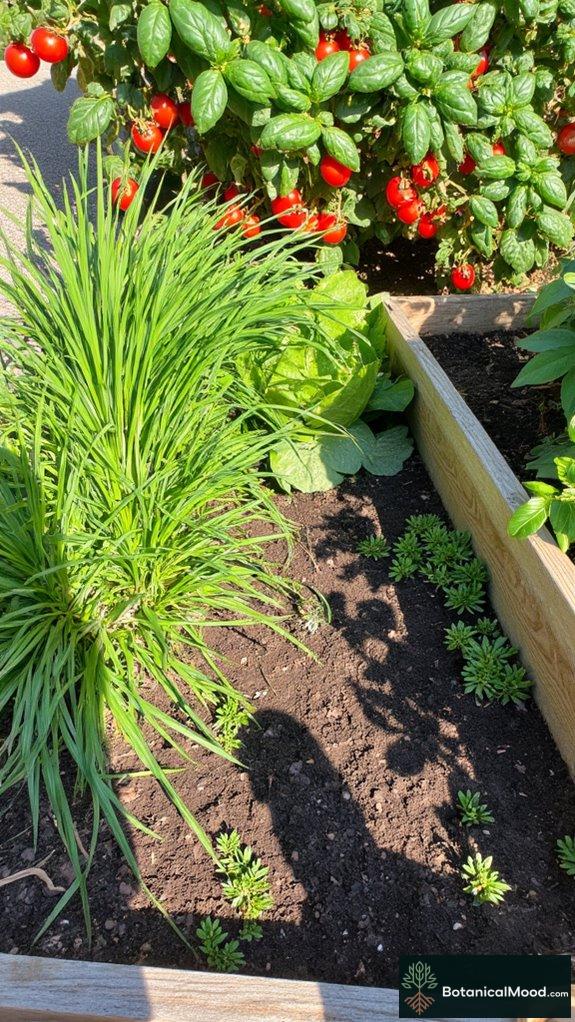
When you consider the potential of small spaces for edible landscaping, you’ll find that a well-planned garden can provide a bounty of fresh produce while enhancing your environment.
I love combining aesthetics with functionality. Envision vibrant cherry tomatoes (Solanum lycopersicum) cascading alongside fragrant herbs like basil (Ocimum basilicum). Vertical gardening and container systems allow us to maximize yields effortlessly.
Here’s a quick reference table:
| Edible Plant | Space Requirement |
|---|---|
| Lettuce (Lactuca sativa) | 1-2 ft² |
| Radishes (Raphanus sativus) | 1-2 ft² |
| Strawberries (Fragaria × ananassa) | 2-3 ft² |
| Chives (Allium schoenoprasum) | 1 ft² |
Integrate Wildlife-Friendly Elements

Incorporating wildlife-friendly elements into small-space gardens offers an opportunity to foster biodiversity while accentuating the garden’s natural beauty. By creating a habitat for pollinators and small creatures, I’ve noticed not only a thriving ecosystem but also a vibrant, dynamic space.
Creating wildlife-friendly small-space gardens fosters biodiversity and transforms your garden into a vibrant, thriving ecosystem.
- Nesting boxes for birds
- Pollinator-friendly plants like Echinacea purpurea (Purple Coneflower)
- Water features, even mini ponds, to attract frogs and beneficial insects
- Native shrubs such as Vaccinium angustifolium (Lowbush Blueberry) that support local wildlife
These choices not only enhance aesthetics but also contribute to a harmonious balance in urban gardening.
Maximize Space With Container Gardening
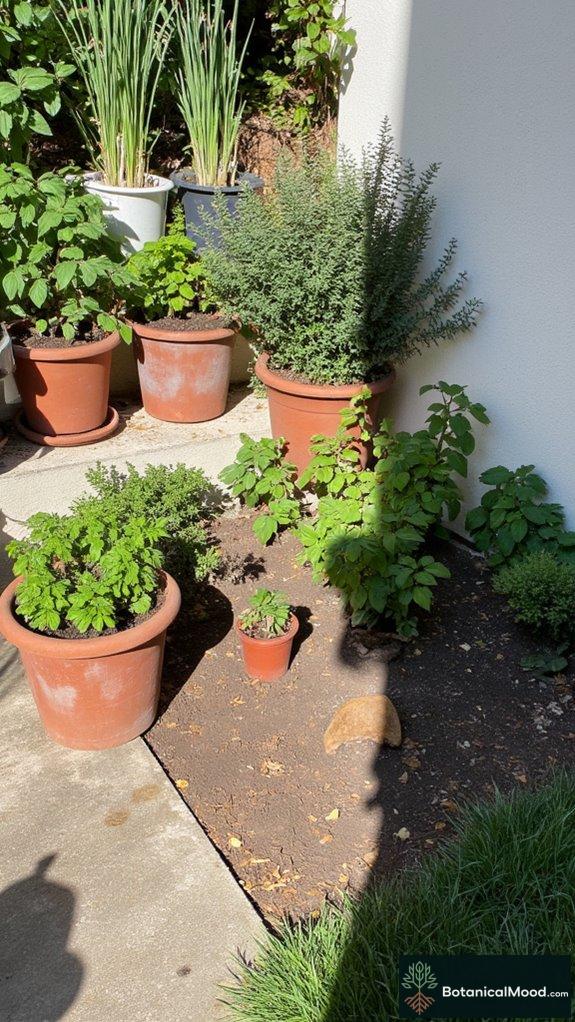
To truly make the most of limited outdoor space, container gardening can transform an ordinary area into a lush and inviting sanctuary.
I find that using a variety of pots, from terracotta to modern resin, allows me to express creativity while maximizing vertical space.
Consider stacking planters or using wall-mounted pockets for herbs like *Ocimum basilicum* (basil) and *Cymbopogon citratus* (lemongrass).
Choose vibrant colors and textures that harmonize with your outdoor aesthetic, incorporating fragrant flowers such as *Petunia* and *Alyssum*.
This innovative approach not only beautifies small spaces, but also elevates the experience, reinforcing my belief that every inch can be vibrant.
Adopt Year-Round Gardening Strategies
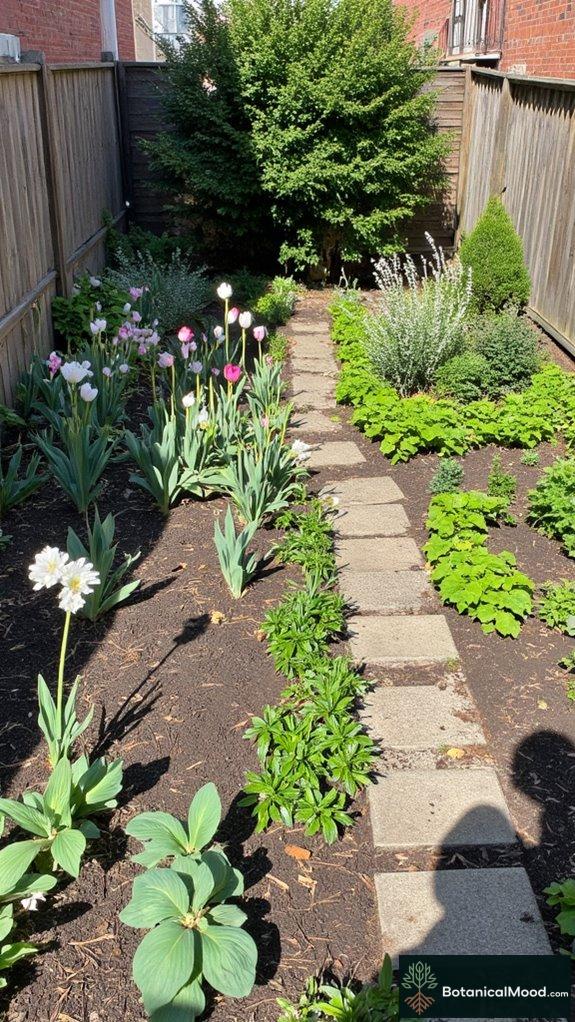
In my own journey to establish an enchanting environment, I focus on optimizing different plant heights and foliage colors, ensuring that each season brings its own beauty.
Adopting year-round gardening strategies fosters innovation and creativity. Here are a few invigorating tips:
- Select cold-hardy plants like Helleborus (Helleborus niger) for winter blooms.
- Layer bulbs such as Tulipa (tulips) for vibrant spring displays.
- Utilize seasonal rotation, including summer edibles like Ocimum basilicum (basil) for a lush harvest.
- Incorporate evergreens, such as Ilex crenata (Japanese holly), to provide structure and depth throughout the year.
Through these methods, I weave beauty into each season.
Incorporate Accessible Garden Features for All Ages

Creating a garden accessible for all ages adds dimension and inclusivity to any outdoor space, transforming it into a communal oasis.
Incorporating raised beds for easy reach, wide pathways (at least 36 inches), and seating areas encourages interaction among family members.
Use non-toxic plants like lavender (Lavandula spp.) and strawberries (Fragaria × ananassa) to engage children and adults alike, stimulating their senses.
Thoughtful elements, like sensory gardens featuring varied textures and colors, enhance the experience.
Consider ergonomic tools from brands like Fiskars, ensuring comfortable gardening for everyone.
Vertical Planting Ideas

While you might think limited space restricts gardening possibilities, vertical planting opens a world of opportunities where creativity flourishes and even the smallest area transforms into a vibrant green retreat.
Here are some innovative ideas to inspire your vertical garden journey:
- Utilize trellises and A-frame structures for climbers like Cucumis sativus(cucumbers).
- Repurpose old gutters as cascading planters for trailing blooms.
- Choose lightweight potting mixes to optimize drainage in smaller spaces.
- Group plants like Sedumspp. (sedums) and *Thymus vulgaris* (thyme) for diverse textures and vibrant aesthetics. Vertical gardening enhances airflow and drainage, allowing your plants to thrive upwards!
With a touch of imagination, your garden can thrive upwards!
Efficient City Garden Layouts

Efficient city garden layouts can transform even the smallest spaces into lush havens, allowing urban dwellers to embrace nature without compromise.
By evaluating sunlight exposure and wind patterns, I craft ideal plant placements for diverse species. Choosing companion plants like basil (Ocimum basilicum) alongside taller tomatoes (Solanum lycopersicum) maximizes growth while conserving space.
Strategically placed pathways guarantee effortless access, allowing me to harvest fresh ingredients from my raised beds, while using vertical structures for privacy and aesthetics.
Multitasking zones cater to relaxation, food production, and seasonal shifts, resulting in a vibrant, functional urban oasis that reflects a vision of city gardening I hold dear.
Meet the Garden Design Innovator
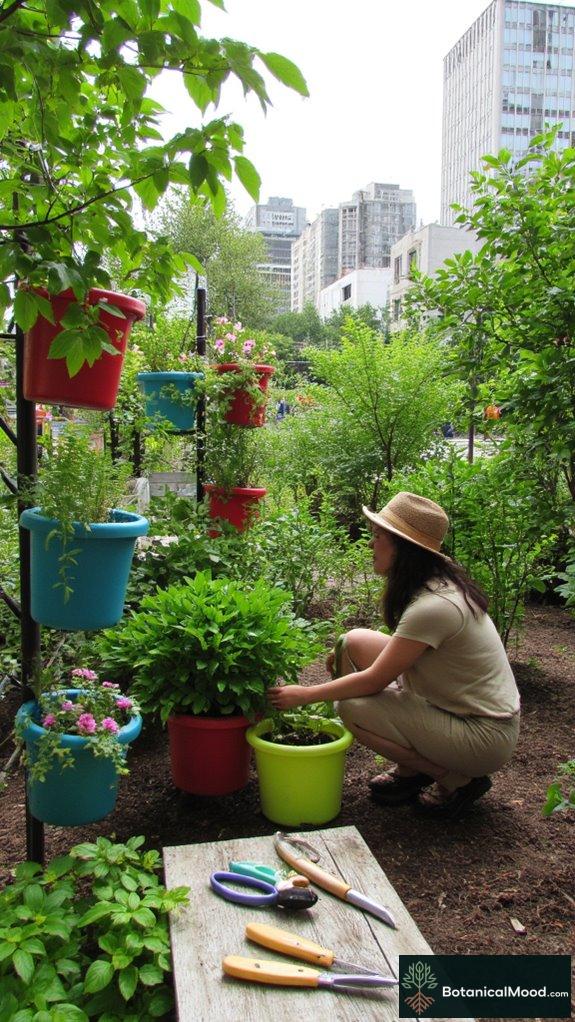
Jessica Thompson, a passionate gardener from Portland, Oregon, transformed her small urban space into a vibrant garden after years of longing for a personal green sanctuary amidst the city hustle.
To bring her vision to life, Jessica researched unique design concepts and consulted with local horticulturists. She meticulously planned her garden layout, selecting plants that thrive in limited sunlight, while considering vertical gardening techniques to maximize her space.
Utilizing tools from brands like Fiskars and Garden Weasel, Jessica employed ergonomic hand tools for planting and maintenance.
She accessorized her garden with eco-friendly planters and watering systems, seeking expert advice from renowned horticulturists like Melinda Myers to guarantee peak growth.
Compact Urban Greenery Solutions

How can we transform our small urban spaces into lush, multifunctional gardens that not only beautify our surroundings but also enhance our quality of life?
Here are some innovative solutions:
- Vertical gardens (e.g., Sedum spp.) to maximize wall space
- Green roofs that provide insulation and biodiversity
- Pocket parks that transform underused lots into community green hubs
- Edible gardens integrating herbs and vegetables into your decor
These compact greenery solutions not only contribute to urban sustainability but also promote mental well-being, thereby creating a healthier, more vibrant community.
This is why I love sharing perspectives on gardening through Botanical Mood.
Garden Design FAQ
What Are the Initial Costs of Setting up a Small-Space Garden?
Setting up a small-space garden can cost anywhere from $50 to several hundred dollars, depending on materials, plants, and containers. I’ve found budgeting wisely helps me create a beautiful, productive space without breaking the bank.
How Do I Choose the Right Plants for My Urban Garden?
Selecting suitable specimens starts with considering sunlight, size, and surrounding space. I love exploring native plants and vibrant vegetables that thrive in tight spots. Experiment with varieties that excite you; innovation leads to incredible urban gardening experiences!
What Maintenance Is Required for Vertical Gardens?
Maintaining my vertical garden’s health means regularly watering, pruning, and monitoring for pests. I also check nutrient levels and guarantee proper sunlight. It’s a bit of work, but I love the vibrant results!
Can Small-Space Gardens Attract Pests in Urban Areas?
Yes, small-space gardens can attract pests in urban areas. I’ve noticed unwelcome visitors like aphids and spider mites sneaking in. Luckily, with proactive measures and innovative designs, we can manage these pests effectively.
How Can I Involve Children in Small-Space Gardening?
I involve kids by letting them choose plants, designing the layout, and watering together. We make it fun with colorful pots and garden art, turning small gardening tasks into exciting adventures they actually look forward to.
Summary
Transforming my urban space into a green oasis has been a rewarding journey. Utilizing vertical gardens and smart planters has helped maximize my small balcony. It’s incredible how these little changes can create a vibrant sanctuary amidst the city hustle.
I’d love to hear about your own experiences with urban gardening. What challenges have you faced, and what solutions have you found?
Feel free to share pictures of your garden. How did you design your space? I can’t wait to see your creativity!
References
- https://farmonaut.com/blogs/urban-gardening-products-farming-vs-gardening-2025
- https://greenthumbreview.com/green-dreams-the-top-20-garden-trends-shaping-2025/
- https://www.taylormadelandscapes.com/top-trends-in-urban-landscaping-to-watch-in-2025/
- https://www.parkseed.com/blogs/park-seed-blog/top-12-gardening-trends-for-2025
- https://www.lawnstarter.com/blog/studies/best-cities-urban-gardening/
- https://raleighrealty.com/blog/gardening-statistics-trends
- https://165357.fs1.hubspotusercontent-na1.net/hubfs/165357/2025 Garden Trends Report.pdf
- https://aigarden.design/blog/urban-balcony-gardening-trends-for-2025/
- https://www.urbandc.co.uk/inspiring-2025-garden-trends/
- https://www.rhs.org.uk/garden-inspiration/seasonal/2025-gardening-predictions
- https://dug.org/gardening-resources/vertical-growing/
- https://www.parkseed.com/blogs/park-seed-blog/12-innovative-vertical-gardening-ideas-for-maximizing-small-spaces
- https://www.youtube.com/watch?v=7UNS_zlxjow
- https://www.modlar.com/news/404/transforming-urban-spaces-with-vertical-gardens/
- https://www.luxushomeandgarden.com/blogs/news/how-to-plan-design-vertical-garden
- https://www.azurefarmlife.com/farm-blog/vertical-gardening-plants-benefits-and-tips-for-a-gorgeous-vertical-garden
- https://sugarhilloutdoors.com/optimizing-your-garden-layout-for-efficiency/
- https://blog.firsttunnels.co.uk/layout-tips-for-small-city-gardens/
- https://freckledcalifornian.com/2021/03/05/tips-for-creating-a-garden-crop-plan-layout/
- https://extension.umn.edu/lawns-and-landscapes/landscape-design
- https://www.jackwallington.com/how-established-should-a-newly-planted-garden-design-be/
- https://plewsgardendesign.co.uk/city-gardens/
- https://wonderground.press/harvest/edible-garden-planning-small-urban-spaces/
- https://kinder.rice.edu/urbanedge/urban-gardening-has-taken-root-and-its-time-cities-encourage-new-growth
- https://pmc.ncbi.nlm.nih.gov/articles/PMC6209905/
- https://eprints.glos.ac.uk/6544/
- https://ecologyandsociety.org/vol27/iss3/art22/
- https://besjournals.onlinelibrary.wiley.com/doi/full/10.1002/pan3.10423
- https://www.tandfonline.com/doi/full/10.1080/26395916.2024.2315991




















